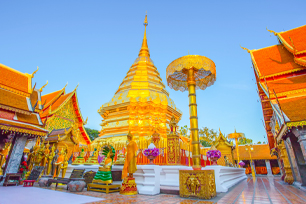There is certainly a lot to smile about when you holiday in Thailand. Here, the Old World meets something entirely new. From temples to markets to food to waterways to beaches to nightlife, there is something to please everyone. As Thailand – a constitutional monarchy – is the only country in Southeast Asia to not have been colonized by Europeans, its cultural identity remains largely intact. And the Thai people, among the friendliest in the world, love to share their country with visitors. The only question is what not to see!
Destination Must-See's
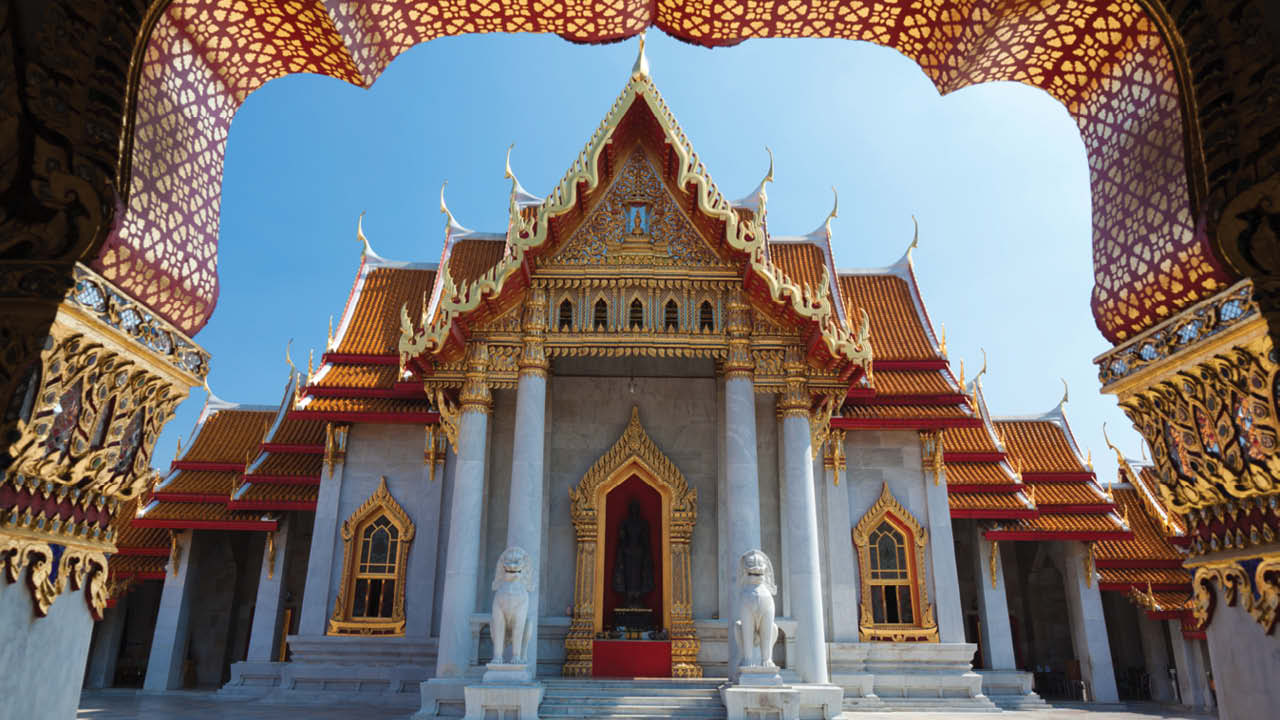
Bangkok:
Bangkok, or the City of Angels, was founded in 1782 by King Rama I – first king of the present Chakri dynasty. It has come a long way in 235 years. It is the political, economic, cultural, culinary, and spiritual capital of Thailand, and one of the world’s most visited cities. With so much to offer, how does one prioritize? Start with its temples, such as Wat Pho, Wat Phra Kaew, and Wat Arun. For more culture, visit the Grand Palace and the National Museum.
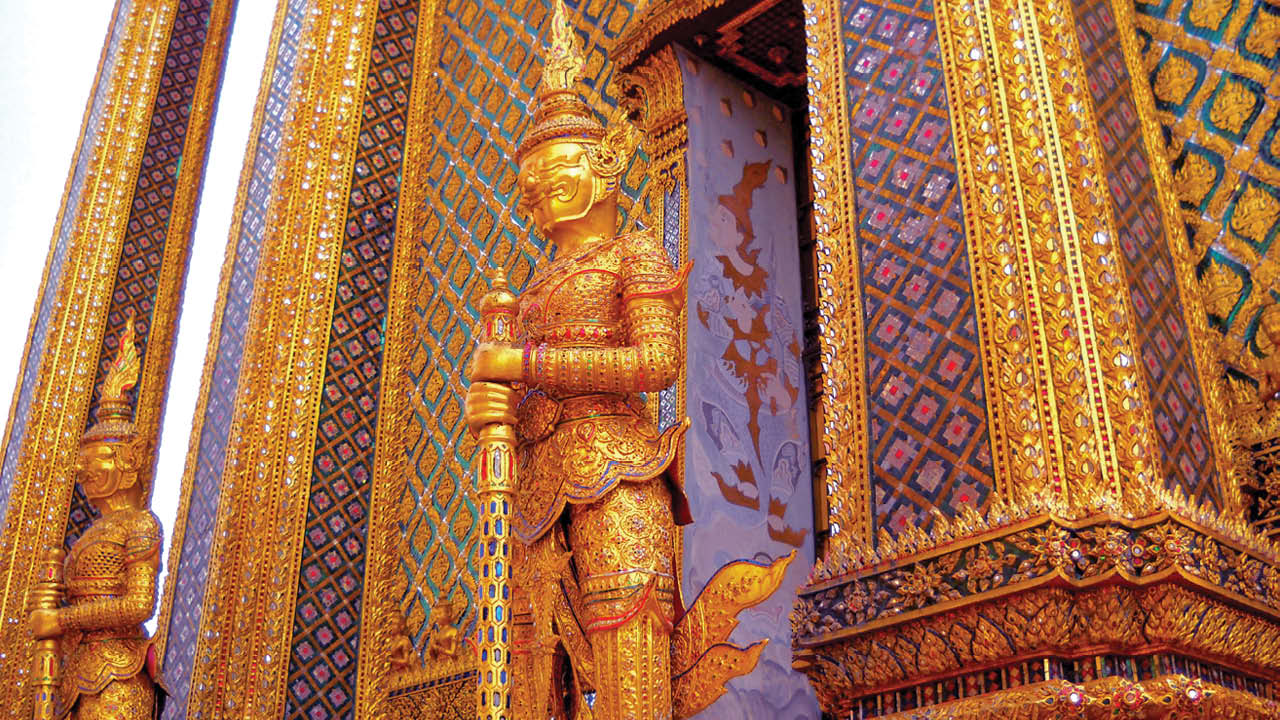
Buddhist Temples:
Buddhist temples in Thailand are known as wats. There are more than 30,000 temples in Thailand – 400 functioning temples in Bangkok alone. Wat Pho in Bangkok is Thailand’s most sacred site, and home to the Temple of the Reclining Buddha. This golden Buddha is 151 feet long and the largest in Thailand. Wat Phra Kaew, also in Bangkok, is the Temple of the Emerald Buddha, Thailand’s most sacred Buddha sculpture carved out of green jade. Bangkok’s Wat Arun, or the Temple of Dawn, has the tallest prang (tower) in Thailand – 220 feet high – decorated with bits of porcelain and seashells.

The Grand Palace:
The Grand Palace, located in Bangkok, is actually many buildings. King Rama I, founder of the Chakri dynasty, began construction of his royal palace in 1782, and it was used as a royal residence until 1925. Surrounded by four walls, it has a total area of 2,351,000 square feet. There are three main zones: the Outer Court (royal offices, public buildings, and the Temple of the Emerald Buddha); the Middle Court (important residential and state buildings); and the Inner Court (exclusive to the King, Queen, and consorts). It is a must-see in Bangkok.
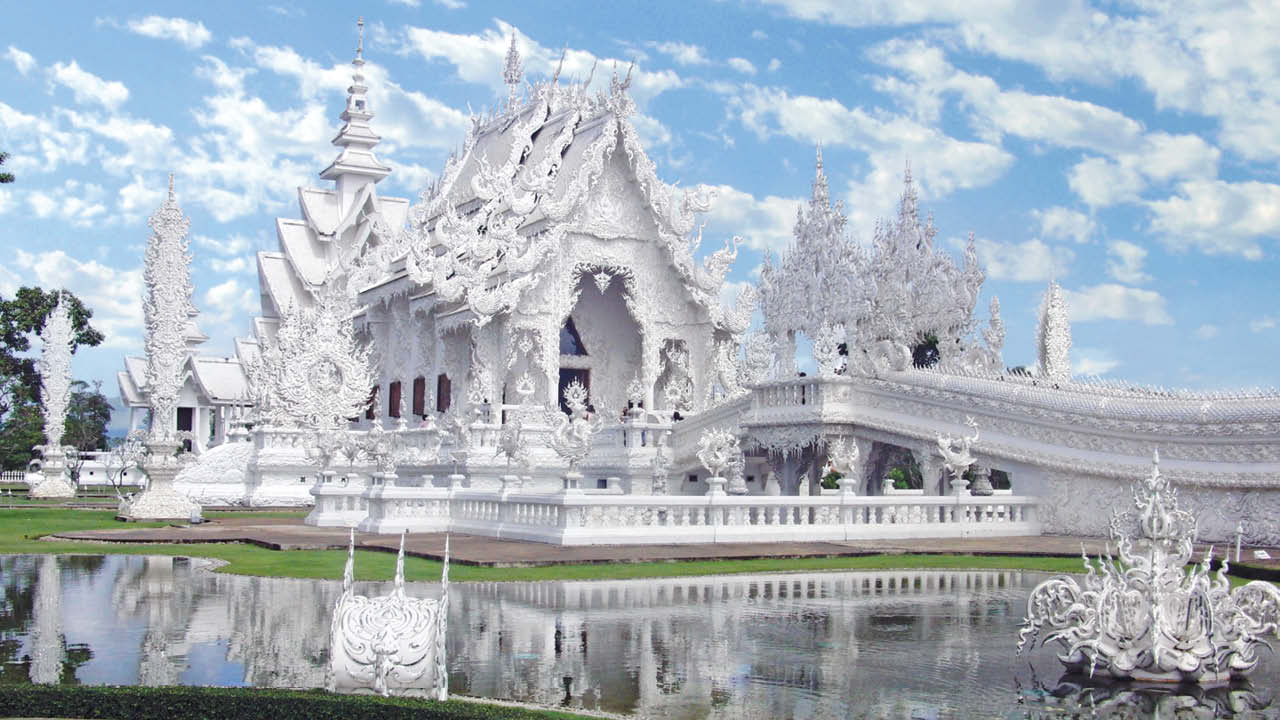
Chiang Rai and Chiang Mai:
In the north of Thailand there are two cities definitely worth a visit. Chiang Rai is the northernmost large city in Thailand. It was founded in 1262 as the second capital of the Lanna kingdom, after Chiang Saen. Some notable sites are temples such as the Wat Rong Khun Temple (the white temple); the Saturday Walking Street market and the Night Bazaar; and the Hill-Tribes Museum and Education Centre. Chiang Mai, or the “Rose of the North,” is Thailand’s northern capital. It succeeded Chiang Rai as the capital of the Lanna kingdom in 1296. Some notable sites here are Wat Prathat Doi Suthep, the most famous of the city’s 300 temples; and the Sunday Evening Walking Street market.
Destination Must-Do's
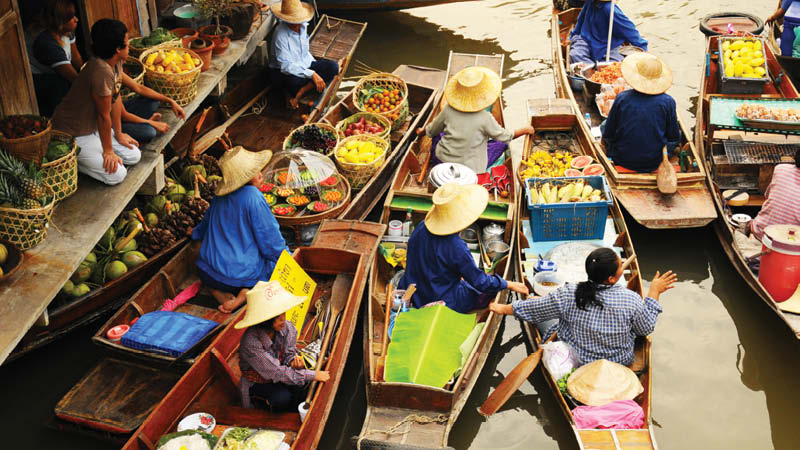
Markets:
Markets are a way of life for the Thai people, and they are popular with visitors as well. The Chatuchak Market in Bangkok has more than 8,000 shops on weekends. Vendors sell fruits and vegetables, clothes, pottery and ceramics, basketry, accessories, flowers, and even pets, among other things. The Silom district of Bangkok has all manner of shopping, from a mall to markets, including a night market. Night markets have a lively atmosphere. You can find local items here, along with food, drink and live music. They can get quite crowded. Floating markets emerged as a result of daily commerce being done along rivers and klongs (canals). Damnoen Saduak, outside Bangkok, is the most famous.
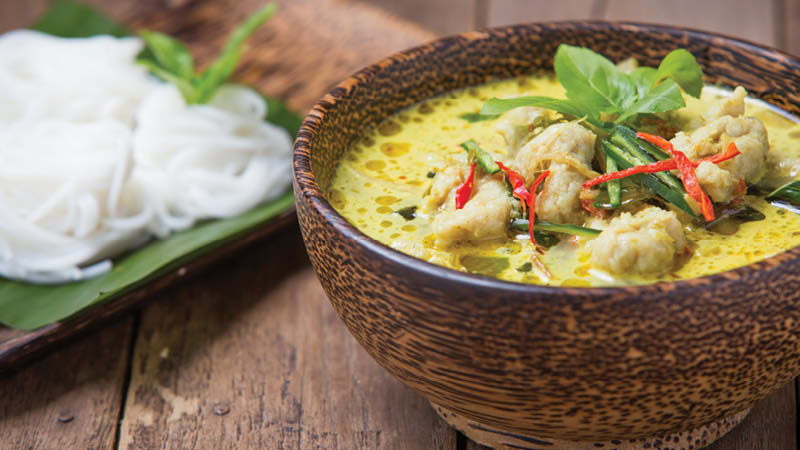
Thai Cuisine:
Thai cuisine is a balance of five flavours: sweet, sour, salty, bitter, and spicy. Most people know of pad Thai, or fried noodles, but there are many other dishes to try. Tom Yam Goong is a spicy shrimp soup made with a broth of lemongrass, chillies, lime leaves and juice, and fish sauce. Tom Kha Kai is a spicy chicken soup with chillies and lemongrass in a coconut milk broth. Som Tam, or spicy green papaya salad, perfectly represents all five flavours. Kao Pad is fried rice with egg, onion, and herbs. Gaeng Keow Wan Kai is chicken in green curry – green curry paste stirred into hot coconut milk. And there is so much more! Most dishes are served with rice, a Thai staple. If you prefer to not have your mouth on fire, ask for “mai phed,” or not spicy.
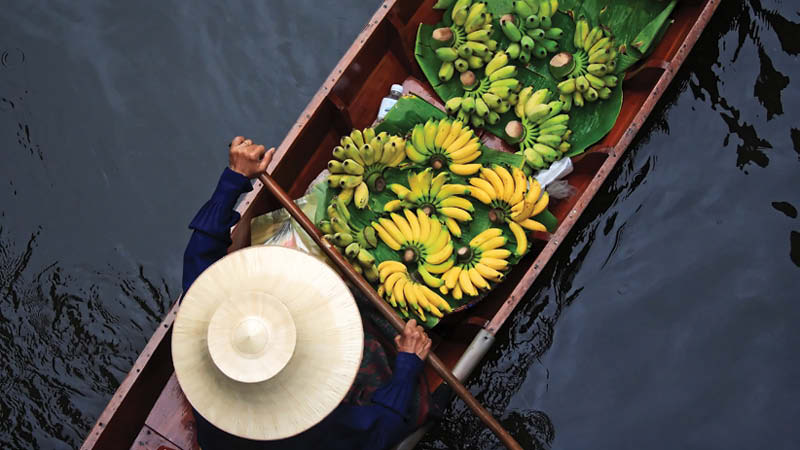
Waterways:
The waterways in Thailand have long been an integral part of life here. Bangkok was once called the “Venice of the East” because of its klongs, or canals. Many have been filled in, but there are still some that are used for floating markets. A long-tail boat, a lightweight vessel with narrow beams, high-pointed bows and a canopy, is used as a floating market “stand,” but visitors can take rides in these boats as well. Bangkok’s Chao Phraya River – “the River of Kings” – is the dividing line between the east and west of the city. And in the north of Thailand, the mighty Mekong River forms a border between Laos, Myanmar and Thailand, known as the Golden Triangle.
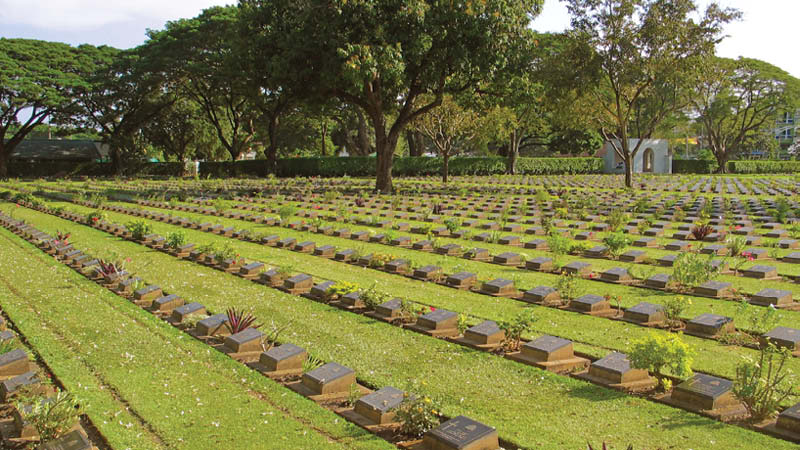
Kanchanaburi:
The bridge that spans the River Kwai, subject of a famous book and 1957 film, is part of the infamous Death Railway in the Kanchanaburi province in western Thailand. The 258-mile railway, built by Allied prisoners of war and native laborers, served to connect Thailand and Myanmar by land so that the Imperial Japanese Army didn’t have to transport their supplies by sea. It is estimated that more than 100,000 POWs and laborers died during construction, hence the Death Railway name. Today, both the bridge and railway are symbols of peace. There are also two museums and a war memorial.
